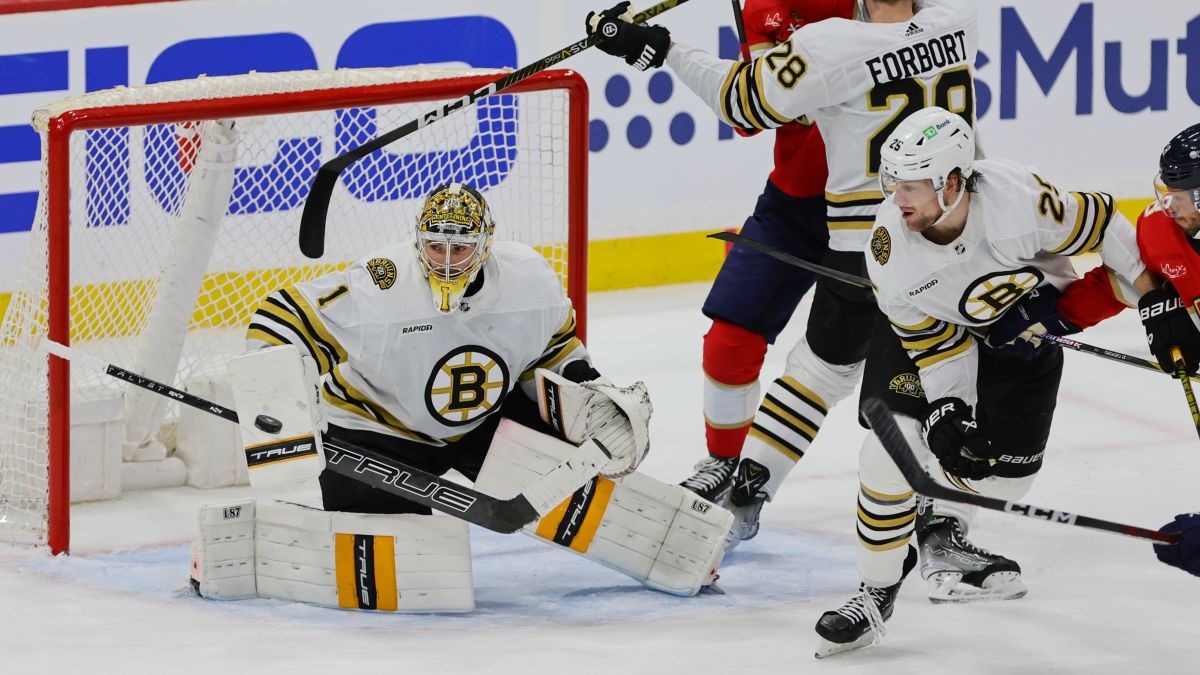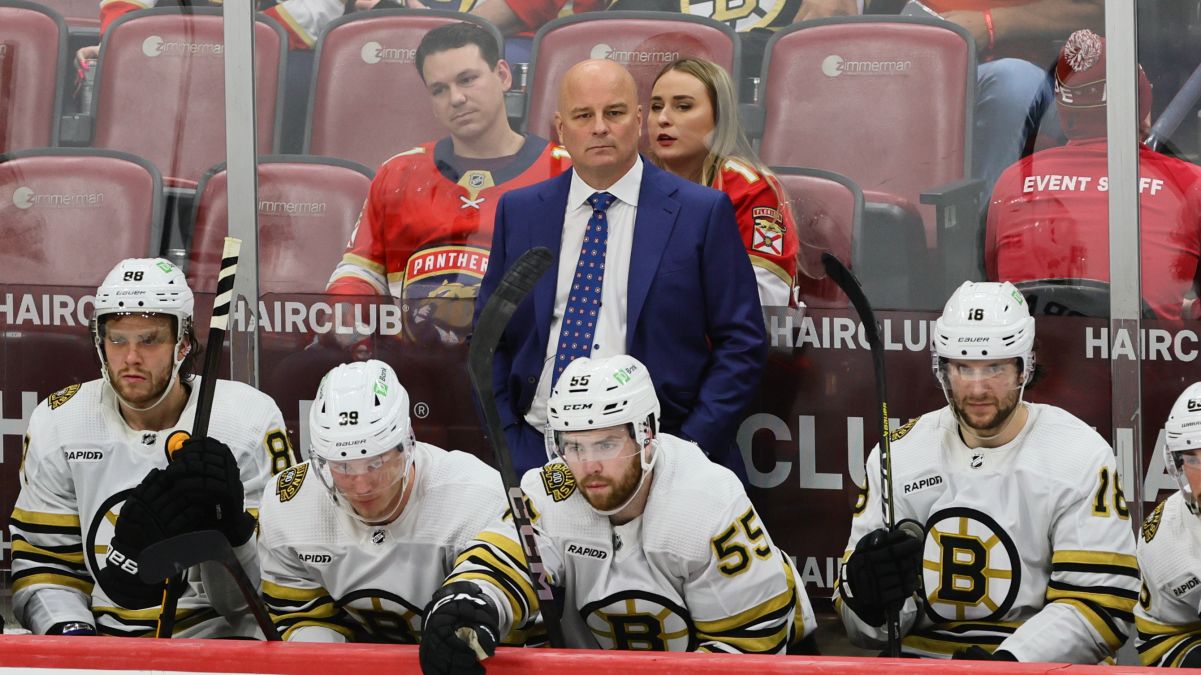By all accounts, the trade for power forward Rick Nash at the deadline should have worked out splendidly for the Bruins.
Nash, 33, is a proven NHL goal-scorer, a skilled big body. He fit the profile of previous Bruins Milan Lucic, Jarome Iginla and Nathan Horton, who achieved big-time success with David Krejci in the past. Nash certainly looked as if he was going to be an impact player for the Black and Gold when he posted a couple of goals and a whopping 23 shots on net in his first four games after getting traded from the New York Rangers for Ryan Spooner, a 2018 first-round pick and Ryan Lindgren among other assets.
- MORE ON B'S FREE AGENTS - Stick with Khudobin or find another backup plan?
But the production slackened as the games rolled on, and Nash eventually was dinged up with a concussion that ended his regular season. The big right winger returned for the playoffs and even had a two-goal game against the Tampa Bay Lightning in Game 1 of the second round, but Nash couldn’t consistently provide offensive punch on Boston’s second line.
In that respect, Nash’s three goals and five points, along with his minus-7 rating in 12 playoff games, were a pretty big disappointment given the assets surrendered to acquire him. The 6-foot-4, 220-pounder was brought in to help avoid situations like the four consecutive playoff losses to the Lightning, where the Bruins couldn’t muster any even strength offense up front from their forward group.
Rather than label Nash a disappointment, however, the Bruins looked at his playoff performance as one that was irreparably harmed by a concussion right in the middle of everything. Clearly, it would have been difficult for any player to hit the ground running right at the start of the playoffs, and Riley Nash suffered from the same kind of issue when he jumped into the postseason after his own concussion issues as well.
“It’s unfortunate that [Nash] got banged up near the end of the season there, and it really took him a while to get back. I don’t think he was himself. He said that during the exit meetings that he wasn’t quite himself. It’s disappointing because we felt we had a guy that was really going to help our secondary scoring and that line and help David [Krejci] get going in some offensive situations,” said Bruins team president Cam Neely. “You could see the big body and how he protects the puck, and how good he is in the corners and along the walls. But he just wasn’t quite himself after coming back from that [concussion] injury.
Boston Bruins
“As Don [Sweeney] mentioned, we’re going to look at every UFA that we have, and RFA, and come to conclusions on whether or not it makes sense for us to move forward with those players.”
While the Bruins may not have ruled out any of their looming free agents with July 1 still more than a month away, it seems like a long shot for Nash to come back to the Bruins based on his age, performance and cost to retain him. Certainly, the player said all the right things while packing up his stuff on breakup day with the team. Nash was an unassuming, pleasant presence following the trade.
- MORE HAGGERTY - Who should the Bruins target in trades and free agency?
Nothing has changed from the simple, basic truth that the Bruins could desperately use a player like Nash when he’s still at his best.
“It was disappointing with having a concussion, and having some effects during it, and only playing a certain amount of games. Then coming back for the playoffs,” said Nash. “But everything was positive. The organization was great. The guys were awesome...So, it was a great chapter here and hopefully, it can continue.
“I would love to [return], for sure. They’ve got a special group here and a lot of talent. It’s a great place to play.”
Clearly, Nash will be looking at a healthy pay cut from the $7.8 million cap hit and $8.2 million in actual salary he was paid in the 2017-18 season. He’s not the same dominant power forward-type he was in his prime years with the Columbus Blue Jackets and Rangers and is coming off 21 goals and 34 points along with a minus-12 in 60 games for the Blueshirts and Bruins. He still flashes the power puck possession, strong two-way game and occasional offense of his youth, but it sure looks like his ability to finish is fading.
If the Bruins could sign a player like Nash for a year or two in the $3-4 million per season range then it might be worth their while. He still appears good for at least 20 goals worth of big-bodied, power forward play. There may some level of interest in retaining Nash simply based on the large amount that Sweeney paid for the player at the deadline and the hope that he can still be what they envisioned him to be last spring.
But let’s be honest here.
What the Bruins really need is a young, better version of Nash on the upswing or at the very least is still in the prime of his career as they look for offensive impact on their second line. There are free-agent options such as James van Riemsdyk who will be much costlier while bringing a similar power forward skill set and there will undoubtedly be trade options such as the Gabriel Landeskog-types that the Bruins have flirted with in the past. Still, that will require the B’s surrendering more assets in trade after forking over their first-round pick, Spooner and a blue-chip prospect in Lindgren for what amounted to six goals and 11 points in 23 games from Nash.
That is not a lot of bang for the Black and Gold buck when it’s all settled.
If it were up to this humble hockey writer, it should be time to cut their losses on Nash while already holding an aging, overpriced power forward type in David Backes. Instead, the Bruins should focus on a younger, perhaps underrated commodity as Horton was when the Bruins traded for him as an underperforming Florida Panthers winger prior to the 2010-11 Cup-winning season.
The Bruins still need an explosive, big body as a goal-scoring bookend for Krejci on the second line, but there’s really no need to prolong the Rick Nash chapter given the underwhelming returns after his three-month stint with the team.


